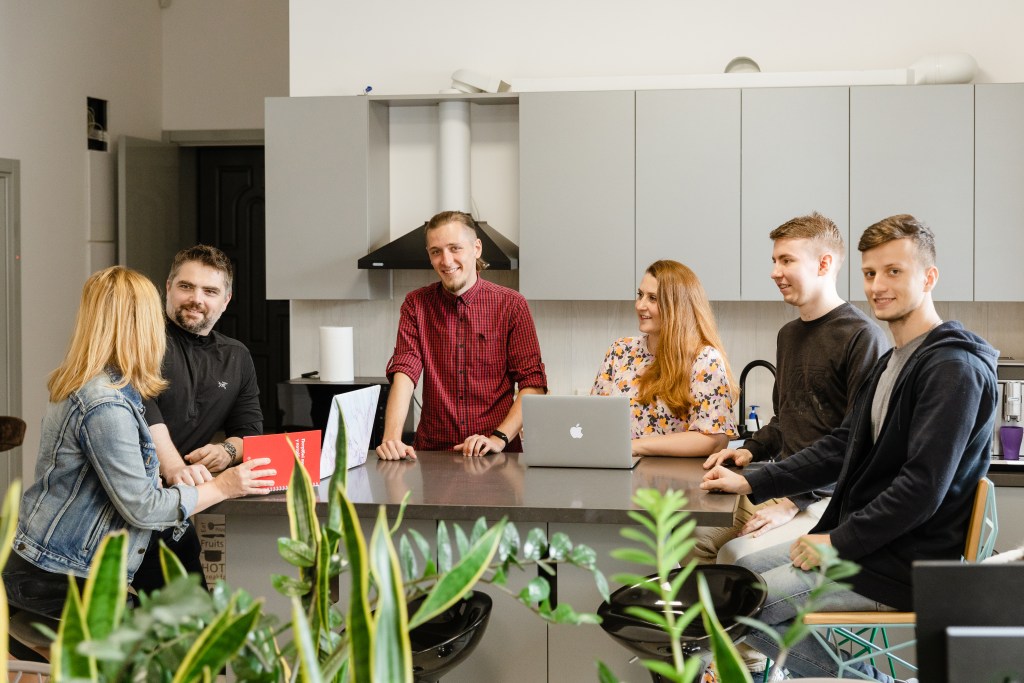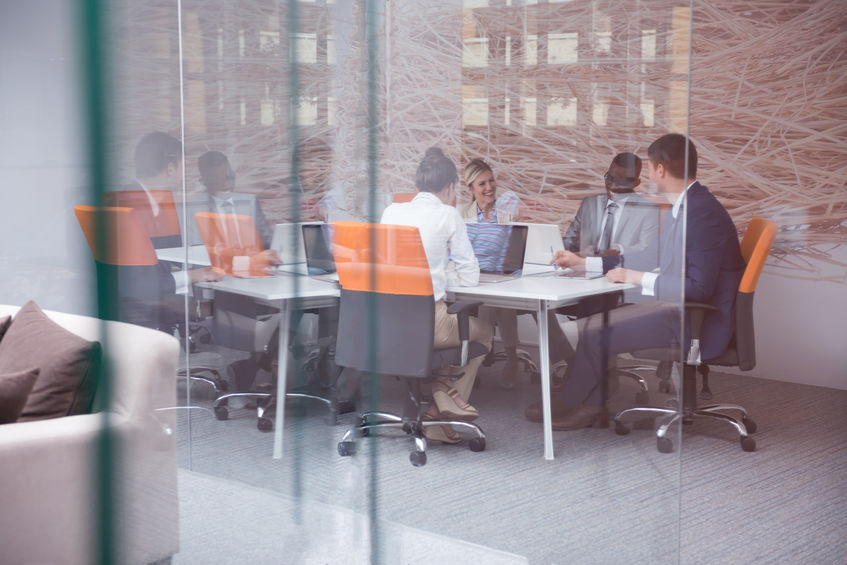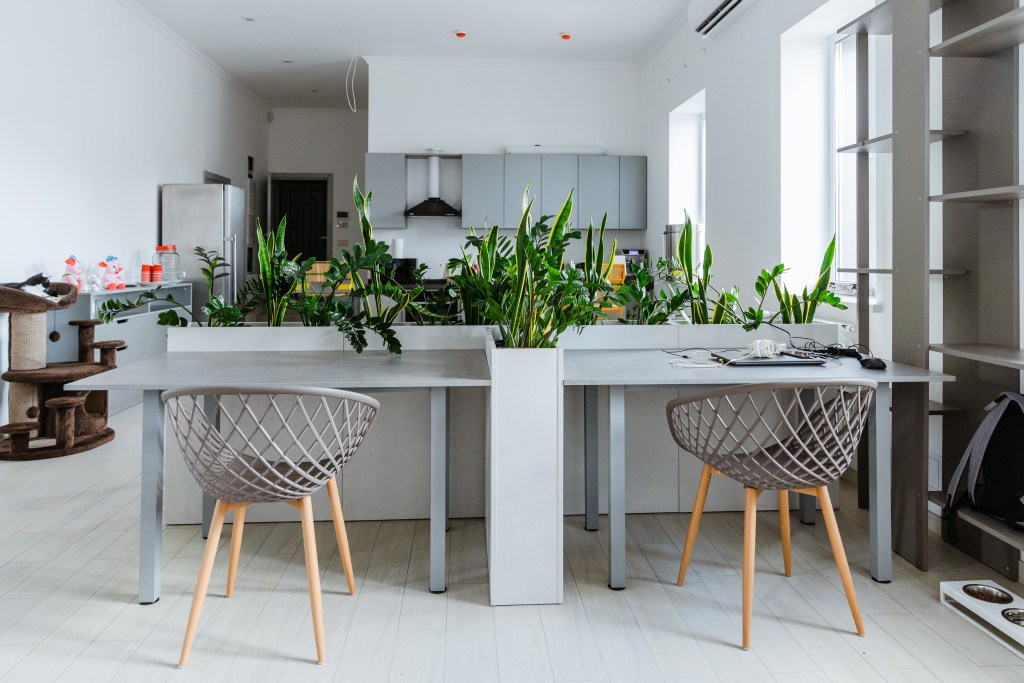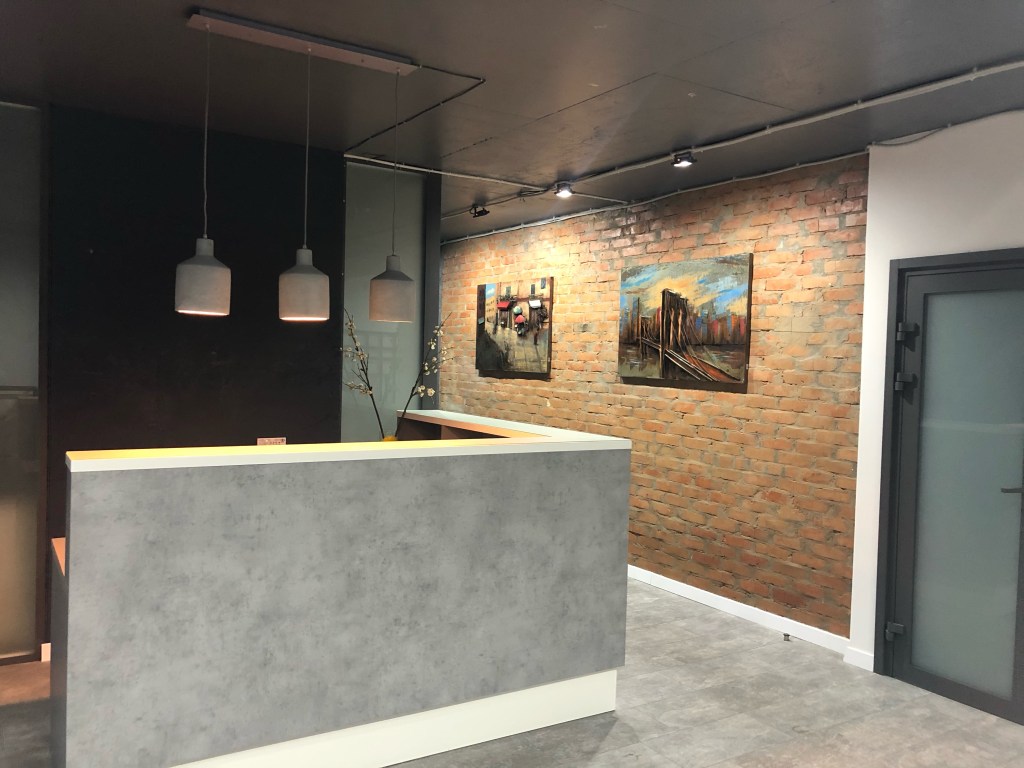Nowadays, you can hardly find a company that hasn’t digitized at least some part of its business.
Being a software development company, Polytech has been cooperating with technology companies, big enterprises, small and medium-sized businesses, startups, and non-commercial organizations for more than fifteen years. So based on our experience, we can say that due to the pandemic, software development services are as sought after as ever.
To be more productive under these circumstances and being unable to work on premises as we did before the lockdown, we had to make our engineers’ work as comfortable and efficient as possible.

There is a widely spread opinion that to design, write, test, implement, and support program codes, programmers need a computer, electricity, and the Internet, alongside experience and expertise, of course.
In general, remote work has proven that it’s true. But nevertheless, there is some doubt in whether the final result will be good and deliver the expected value if engineers don’t meet personally, interact only via communicators, and all meetings are held in a teleconference format.
What are the downsides of working remotely?
Here are the two main ones:
- Lack of constant interaction – exchanging opinions, experience and expertise
- Problems with time management and lack of self-discipline – nobody prevents employees from doing their own business during their working day.
Taking into account the gravity of these two issues, it’s time to start worrying about a possible decrease in performance.
After analyzing the negative implications of these downsides for the performance and business in general, we have come up with a way out that might help us to avoid them.
Moreover we have managed to preserve all the substantial benefits of working remotely: extra time saved on commuting, working in a habitual comfortable environment, absence of distractions.
So what does this approach look like, and how we have managed to implement it?
I’ll tell you in a couple of words how we worked before the lockdown.
We had a 5000m² office in the downtown next to a metro station, a few dozen people of administrative staff responsible for the proper functioning of the office, 24/7 parking, high-speed Internet access, electricity consumption on an industrial scale, everyday delivery of consumables, professional water filters, premium coffee machines, a cafeteria, gym, office playroom, custom-made office furniture, washer/dryers, showers, disinfection, and aromatization. It was a general tendency in all IT companies before COVID 19 outbroke. When the quarantine started, we did not doubt that we would come back to our office, and even when public transportation stopped functioning, our colleagues got to the office by taxi. Our office was a cozy home for us, with creative atmosphere, delicious coffee and tea, 24-hour access. We received clients there, held seminars and training, and came there even on weekends and holidays, working late.

On the other hand, we had to pay high rent and make a lot of effort to optimize costs looking for reliable providers and trying to get discounts. Not to mention time lost in traffic jams and closed metro stations on the days when football matches and other events were held.
At the end of March 2020, even the biggest opponents of working remotely had to give up and resign themselves to working from home. To our deep satisfaction and despite all the apprehensions, we found out that our performance and coordination weren’t affected. Lack of personal communication was obvious, but on the other hand, we got some more additional time, which was previously needed for getting to work and back. We meticulously monitored quality that remained at a high level. We have managed to successfully implement all the projects, sign up contracts with new clients, and add new colleagues to the teams.

After rental contracts terminated, our operating costs decreased dramatically, allowing us to renew equipment and provide our employees with furniture for their home-offices. We also came up with and implemented a cost compensation system for the engineers using their own equipment. We also started implementing a virtual knowledge base of the company.
In addition, we studied the experience of our foreign partners. Some of them started working solely remotely or reduced the number of employees working on-site. Google announced that they would continue working from home till the middle of summer 2021, compensating their employees furniture costs and providing them with all necessary equipment.
So does it make sense to keep working remotely?

Taking into account all mentioned benefits, the only rational answer seems to be yes. But on the other hand, people are not machines. They can not perform their work efficiently without socializing with their colleagues. We can’t ignore this aspect as depriving employees of personal interaction can lead to the loss of cohesion and shared trust. These downsides of remote working make any management think twice before making a decision to totally refuse from on-site working.
We thought hard of how to preserve and support friendly office atmosphere as implementation of some of the projects was connected with using the devices available only in the office. Besides, face-to-face meetings were especially needed while building new project teams.
After interviewing our employees about their vision of the further working model, we found out that some of them preferred working from home; others needed to come to the office a couple of times a week.
There were also teams that decided to work solely on premises. As a result, we have decided to apply a hybrid virtual model allowing our employees to work from home as well as to meet in the office if needed. For that purpose we hired some coworking offices in the downtown and in some remote parts of the city. From our perspective, such an approach reduces travel time and helps avoid problems with public transportation if it stops working due to the quarantine restrictions.
In August, Polytech Software opened a coworking office within one minute walk from one of the central metro stations. It has convenient modern work stations and meeting rooms as well as a beautiful view of the city, giving us a chance to relax a little with a cup of tea or coffee. We hold our meetings there with pleasure. The teams that need to use special equipment also meet at the office and work there.

In November, we are opening one more coworking space.
To make our remote work more efficient and facilitate the integration of the new work format, we renewed our equipment, shifting to smaller in size but faster laptops. They do not take up a lot of space at home and can be easily transported to the office and connected to doc stations and monitors if needed. Our system administrators are responsible for selecting the required equipment and its operational support.

Today our infrastructure maintenance costs are ten times lower than the sum we spent working at the office before the quarantine.


